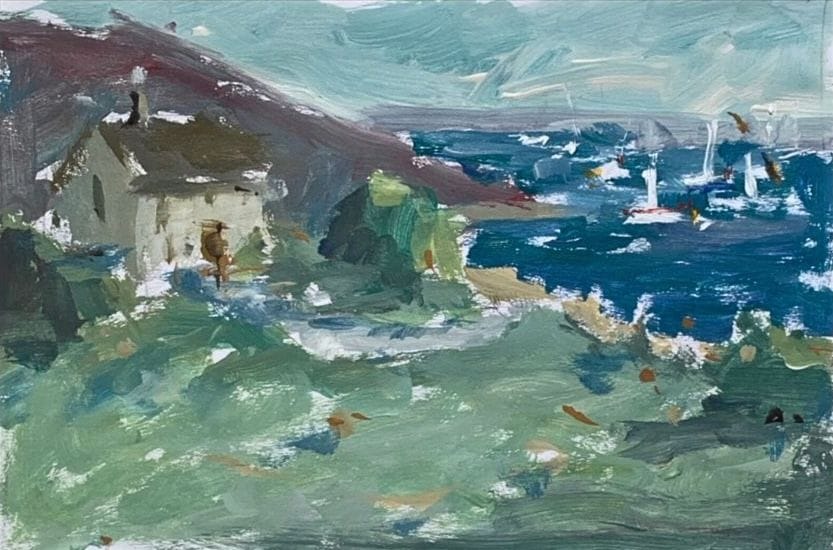Loose Acrylic Landscape Painting Video Tutorial
Family dinners = chaos. Loose landscapes = freedom. In this step-by-step acrylic landscape tutorial, I’ll show you how to relax, sling some paint, and trust the fundamentals to hold it all together.

Painting loose acrylic landscapes is a heck of a lot more fun than trying to have a peaceful dinner around my house. You see, I’m the cook around here. Seven nights a week, I plate up the food, set it down, and every time: chaos. The kids argue, someone cries, someone storms off — and all that work ends up wasted. Forget those picture-perfect family dinner commercials. Not this house.
Painting loose landscapes is different. No fights. No drama. Just a brush, some color, and the freedom to let go of “perfect.”
And here’s the deal: no matter how your landscape turns out — good, bad, or somewhere in between — it’ll be a heck of a lot better than dinnertime at the Joyner house. Lord.

Learn & Improve Your Acrylic Skills
- Acrylic Hub– Your go-to guide for tutorials, tips, and resources.
- Subscribe for More Great Content - Get tutorials, tips, and updates straight to your inbox.
- Follow Me on Pinterest - Daily inspiration, tips, and fresh ideas.
Recommended Acrylic Painting Materials
-
Princeton Catalyst Brushes – Flats (#6, #12), Rounds (#4, #8), Fan (#4), Liner Brush
Durable synthetic bristles for versatile acrylic techniques -
Liquitex Heavy Body Acrylic Paint – Essential Colors
Cadmium Yellow, Yellow Ochre, Alizarin Crimson, Cadmium Red Light, Ultramarine Blue, Cobalt Blue, Burnt Sienna, Titanium White -
Winsor & Newton Cotton Canvas
Reliable stretched canvas for studio and plein air work -
Strathmore 400 Series Mixed Media Paper
Heavyweight, acid-free paper for acrylic and mixed media -
Fabriano Artistico 140lb Cold Press Paper
Excellent for acrylic, mixed media, and textured effects -
Blick Multi-Colored Painting Knife Set
Variety of shapes for texture, scraping, and bold strokes - Miscellaneous: Two pint-sized water containers, paper towels (from Home Depot or Walmart)
- Note: I use canvas or sturdy cardboard as my palette — no store-bought palettes needed.




